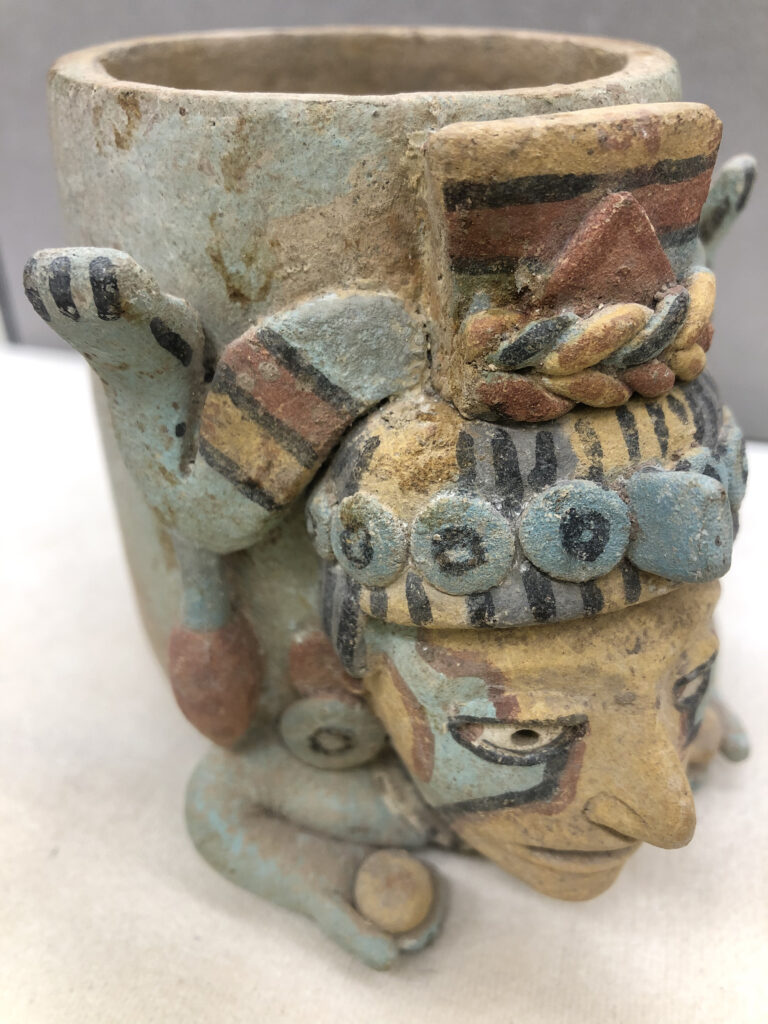This guest post is by John Hessler, curator of the Jay I. Kislak Collection of the Archaeology & History of the Early Americas. It is part of a series, Excavating Archaeology.
The ceramics created by ancient Maya potters make for some of the most vibrantly colored objects that survive in the archaeological record of the Americas. Through the centuries, a great deal of the coloration on many of the surviving examples has eroded, its brilliance lost to the ravages of time. Occasionally however, there are rare survivals that give us an indication of just how colorful was the Pre-Columbian Maya world.
In the Kislak Collection, there are two extraordinary vessels from Quintana Roo, Mexico, which date from the 13th to 15th centuries. These two small ceramic pots, each measuring only a little over four inches tall, are made from red ceramic and display a vivid spectrum of colors.
Diving god vessel from Quintana Roo. Jay I. Kislak Collection. Author photo.
Both of these pots are painted in the style of Mixteca-Puebla forms found in central Mexico and around the area of Oaxaca. The subjects of the vessels are diving figures, so called because they are pictured as plummeting headfirst from the sky. Each vase is painted with angular lines running across their faces, a mark usually associated with a postclassic version of the Maya maize god. Both vessels show the figures holding offerings.
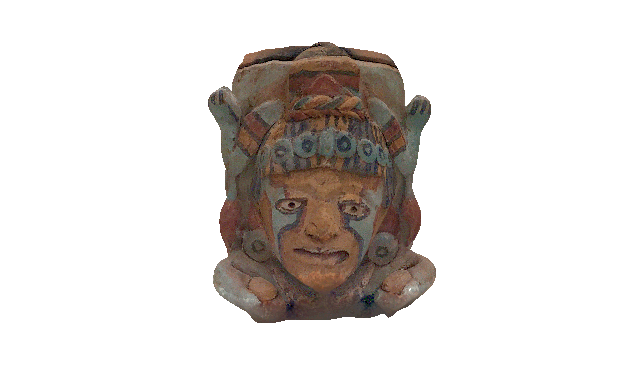
Three-dimensional model of one of the diving god vessels from Quintana Roo. Jay I. Kislak Collection. GIF by author.
The angled lines on the face, along with other symbolic colorations, reveal that these pieces are cultural hybrids, with the late variant of the Maya maize god, known as “Bolon Mayel,” merging with features of the Central Mexican version “Centeotl,” and the god of flowers and plants, “Xochipilli.”
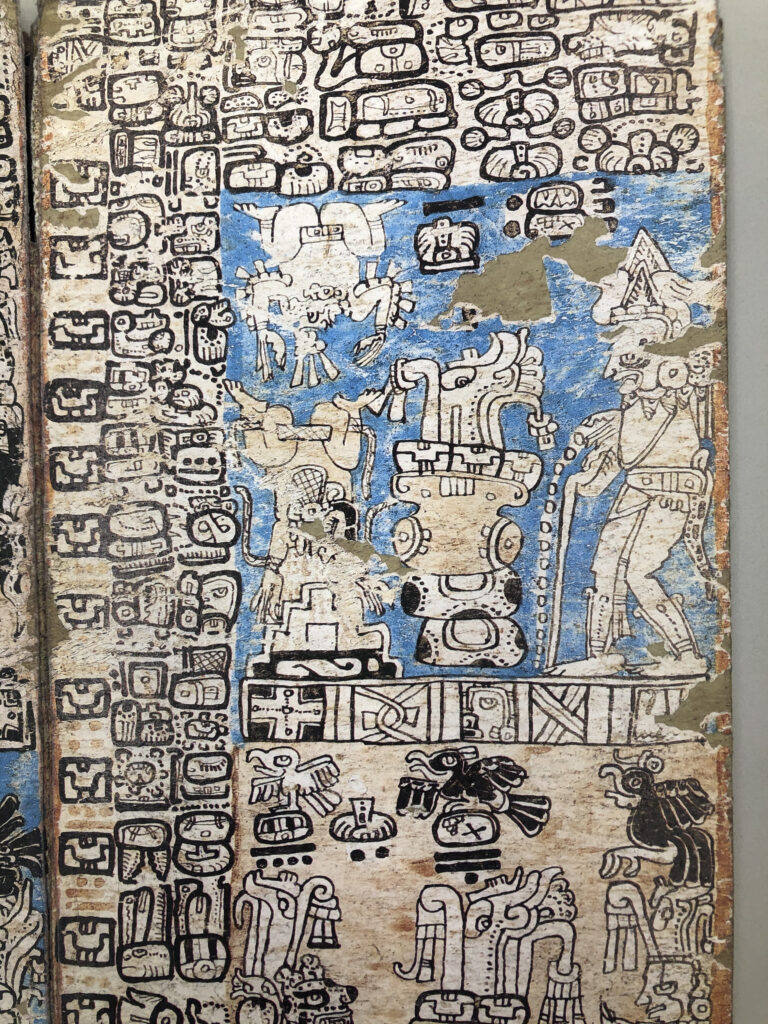
Madrid Codex, showing a diving god. Jay I. Kislak Collection.
The diving god appears in many forms and in many places in Maya art — stone carvings, wall paintings and in one of the four surviving Maya books, the Madrid Codex. It’s pictured above. The diving god is upside down at the top of the blue section.
The painting on the two vases is also special.
The Maya made their pottery by hand, without a potter’s wheel, a process that involved many steps. The first, of course, was selecting and preparing the clay. Then the potter might fold into the mix different additives, known as tempers, such as ground limestone or volcanic ash.
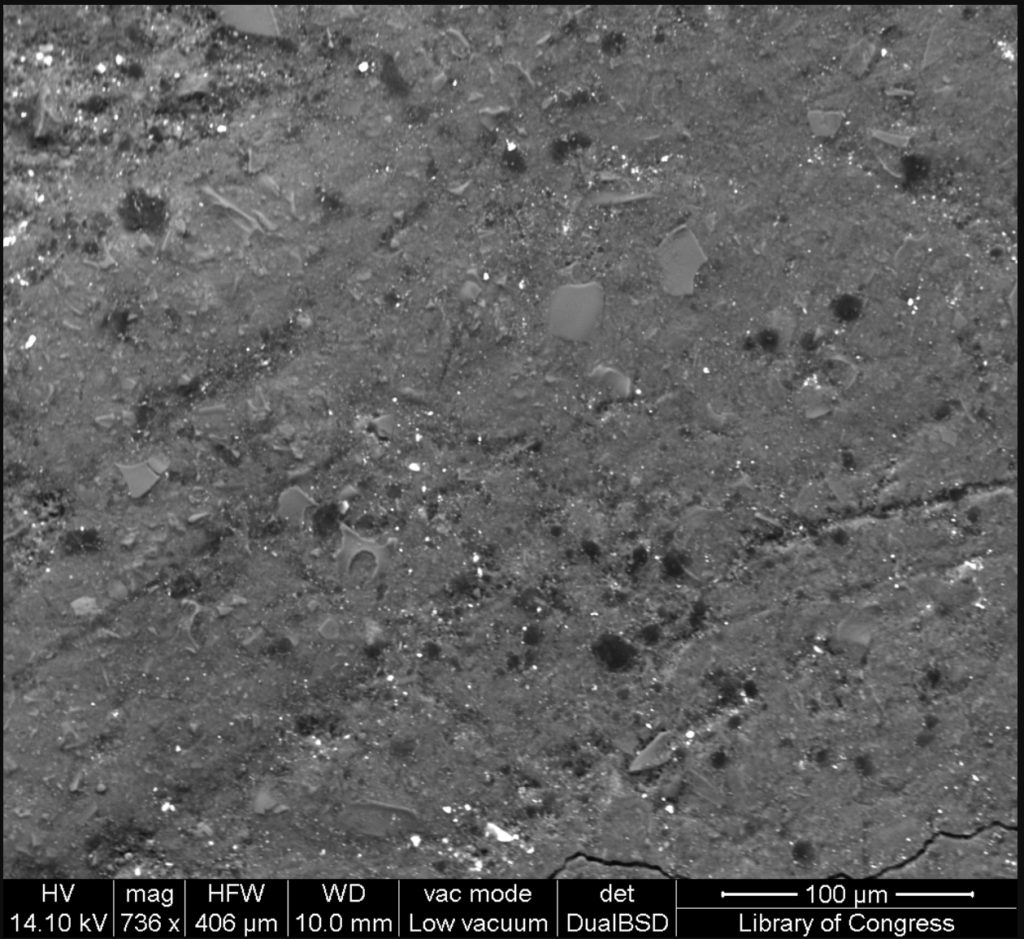
Scanning electron microscope image of the Maya ceramic matrix showing the additives and temper in the clay. Preservation Testing and Research Division.
Before firing in a kiln, the surface would typically be covered in slips, which are mixtures of minerals and pigments. They are applied to give the vessels their color, shine and brilliance. In the the diving god pieces above, there was no slip applied. They were painted after they came out of the firing kiln.

Magnified section of the painted surface. LED microscope photo by author.
One of the colors is an important innovation. The bold and distinct blue paint, which we see on the ear-spools, is called Maya blue. The pigment is a composite of ingredients, primarily a mix of blue indigo dyes derived from the leaves of Indigofera suffruticosa plants (the same dye in your blue jeans). It is combined with palygorskite, a natural clay that is important to the longevity of the color.
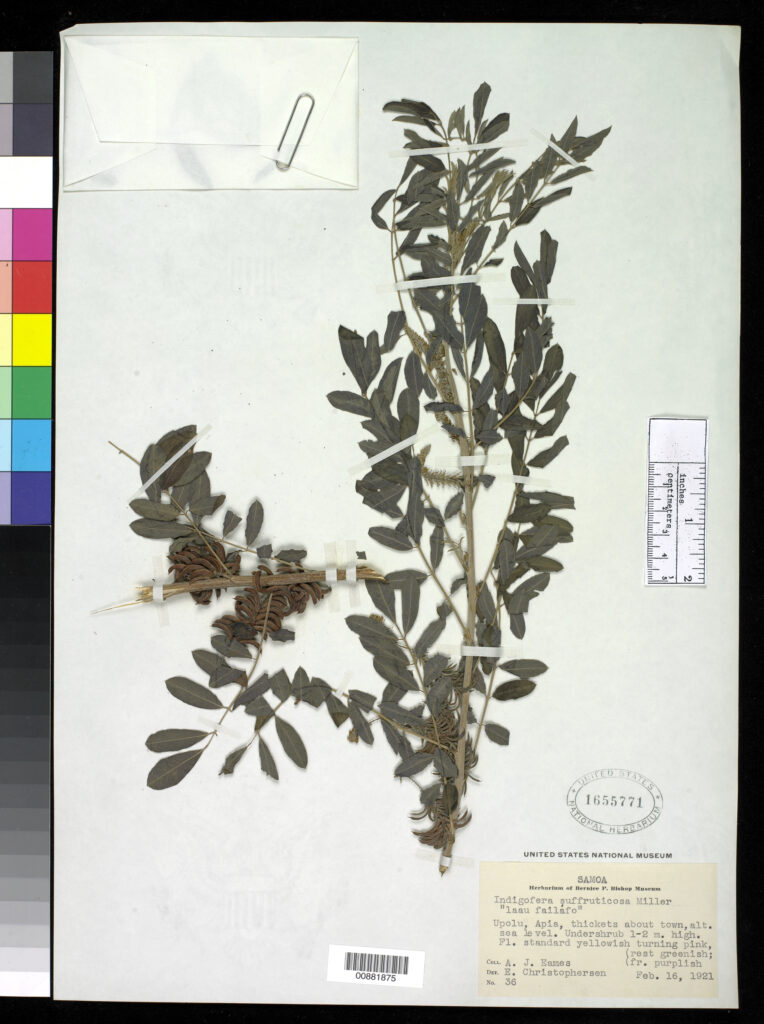
Indigofera suffruticosa leaves from Mexico. Smithsonian Institution, Museum of Natural History, Botanical Collections.
The stability of Maya blue, and the reason it does not fade on ancient ceramics (like it does in your jeans) is because the palygorskite particles in the paint form a kind of lattice, mixing with and trapping the indigo molecules. This structure makes the paint amazingly resistant to natural bio-corrosion, resulting in the survival of the beautiful blue color we still see on the vessels today.

A diving god vessel with Maya blue paint on the ear-spool. Jay I. Kislak Collection. Author photo.
Maya blue, and many of the other colors found painted across ancient Mesoamerica, are striking in their brilliance and composition, and are a testimony to the artists who experimented with the wide variety of plants, minerals, and binders needed to create these colors. Nearly indescribable to us today, and whose original names have, in many cases, been lost to history, these paints are clearly examples of what the 19th century art critic John Ruskin meant when he said, “It is the best possible sign of a color when nobody who sees it knows what to call it.”
Subscribe to the blog— it’s free! — and the largest library in world history will send cool stories straight to your inbox.

